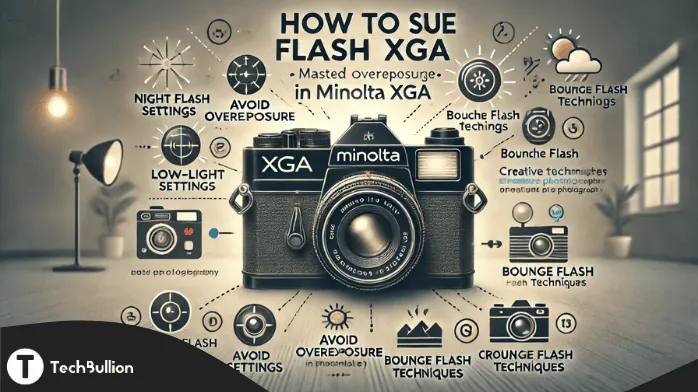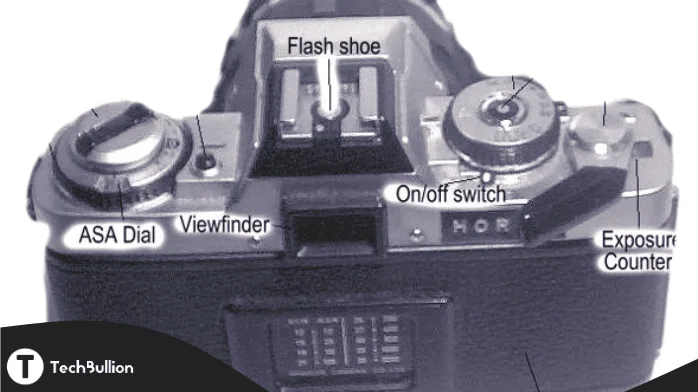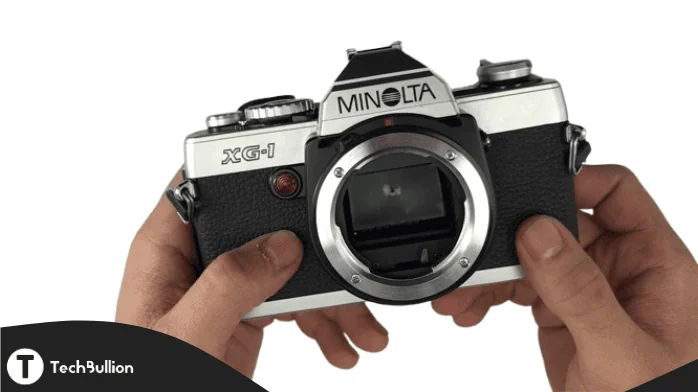How to Sue Flash in Minolta XGA
How to Sue Flash in Minolta XGA can be a game-changer for your photography, allowing you to capture stunning images in various lighting conditions. The Minolta XGA, with its versatile flash system, offers photographers a wealth of options to enhance their shots. In this comprehensive guide, we’ll delve into How to Sue Flash in Minolta XGA to create professional-quality photos that stand out.

Why Learn How to Sue Flash in Minolta XGA?
The Minolta XGA’s flash system is a powerful tool that opens up creative possibilities for photographers. Mastering its flash features allows you to:
- Shoot in Low-Light Conditions: Illuminate subjects in dim settings without compromising quality.
- Balance Shadows and Highlights: Create well-lit images by softening shadows.
- Enhance Portraits: Add depth and drama to portraits with proper lighting.
- Achieve Consistency: Gain control over lighting to ensure uniformity across your shots.
Learning How to Sue Flash in Minolta XGA is an essential skill for both beginners and experienced photographers looking to improve their craft.
Features of the Flash System in Minolta XGA
The Minolta XGA’s flash system is designed to meet a variety of photography needs. Here are the key features How to Sue Flash in Minolta XGA:
- Built-In Flash: A convenient, integrated flash for everyday use.
- Flash Modes:
- Fill Flash: Balances light in bright environments.
- Red-Eye Reduction: Minimizes red-eye in portraits.
- Slow-Sync Flash: Combines ambient light with flash for dynamic night photography.
- Flash Power Adjustment: Allows fine-tuning of flash intensity.
- Compatibility with External Flashes: Expands your options for professional setups.
Understanding these features is the first step in mastering How to Sue Flash in Minolta XGA.
Step-by-Step Guide | How to Sue Flash in Minolta XGA
1. Accessing Flash Settings
To start using the flash, familiarize yourself with the camera’s flash menu:
- Turn on your Minolta XGA.
- Navigate to the flash settings through the menu.
- Select the appropriate flash mode based on your environment.
2. Choosing the Right Flash Mode
Each flash mode has specific uses:
- Fill Flash: Use this mode outdoors to reduce shadows on faces or brighten subjects in backlit situations.
- Red-Eye Reduction: Ideal for portraits in low light, this mode minimizes red-eye by pre-firing a brief flash before the main one.
- Slow-Sync Flash: Perfect for night photography, it captures both the subject and the ambient background light.
3. Adjusting Flash Power
Knowing how to adjust flash power is crucial for achieving the desired effect. To do this:
- Access the flash power settings in the menu.
- Lower the flash power to soften harsh lighting, particularly in portraits.
- Increase the power in darker settings to illuminate the subject effectively.
4. Experimenting with Flash Angles
If you’re using an external flash, experiment with angles to bounce light off ceilings or walls. This diffuses the light, creating a softer and more natural look.
5. Balancing Flash and Ambient Light
One of the most critical aspects of How to Sue Flash in Minolta XGA is balancing the flash with natural light. Use the camera’s exposure compensation feature to ensure that the flash doesn’t overpower the ambient light, maintaining a natural balance.

Common Flash Settings in Minolta XGA and Their Applications
Understanding the specific settings and when to use them is essential for effective flash photography:
| Flash Setting | When to Use |
|---|---|
| Fill Flash | Outdoor portraits, backlit subjects |
| Red-Eye Reduction | Indoor portraits, low-light group shots |
| Slow-Sync Flash | Night photography, capturing ambient light and background details |
| Manual Flash Power | Fine-tuning light for creative effects or challenging lighting conditions |
Tips for Mastering Flash Photography in Minolta XGA
1. Practice with Different Settings
Experiment with the flash modes and power settings in various environments to understand their effects.
2. Use a Diffuser
A diffuser softens the flash light, reducing harsh shadows and giving your photos a more professional appearance.
3. Avoid Overexposure
When learning How to Sue Flash in Minolta XGA, overexposure can be a common issue. Prevent it by:
- Reducing flash intensity.
- Adjusting the camera’s ISO and shutter speed settings.
4. Try Rear-Curtain Sync
This advanced technique, available in some flash systems, creates motion trails behind a moving subject by firing the flash at the end of the exposure.
5. Focus on Composition
While flash is essential, don’t overlook framing and composition. A well-lit photo is only as good as its subject and setting.

Accessories to Enhance Flash Photography with Minolta XGA
Although the built-in flash is powerful, certain accessories can take your flash photography to the next level:
- External Flash Units: Offer greater control over flash direction and intensity.
- Flash Diffusers: Soften light and reduce harsh shadows.
- Reflectors: Bounce light back onto your subject for a more even lighting effect.
- Tripods: Stabilize the camera during long exposures or slow-sync flash photography.
These tools complement the Minolta XGA’s capabilities and expand your creative options.
Troubleshooting Flash Issues in Minolta XGA
Even experienced photographers encounter challenges. Here’s how to resolve common flash problems:
Problem: Red-Eye
- Solution: Enable red-eye reduction mode or use a flash diffuser.
Problem: Overexposure
- Solution: Lower the flash intensity or increase shutter speed.
Problem: Dark Images
- Solution: Increase flash power or adjust the ISO to make the sensor more sensitive to light.
Problem: Harsh Shadows
- Solution: Use a diffuser or bounce the flash off a reflective surface.
Creative Techniques for Flash Photography with Minolta XGA
1. Bouncing Flash
Point the flash at a wall or ceiling to create softer, indirect lighting. This technique works well for indoor portraits.
2. Silhouettes with Flash
Position your subject in front of a bright background and use a low-powered flash to outline their form.
3. Colored Gels
Attach colored gels to your flash to add creative lighting effects, such as warm tones or dramatic highlights.
4. Freeze Action with Flash
Use a high shutter speed and powerful flash to freeze motion in sports or action shots.
Real-Life Examples of Flash Use in Minolta XGA
- Outdoor Portraits: A slight fill flash eliminates shadows and adds depth to the subject.
- Night Scenes: Slow-sync flash captures the ambient lights of a cityscape while keeping the subject well-lit.
- Indoor Events: A diffuser on the built-in flash creates soft, flattering light for group photos.
Conclusion
Mastering How to Sue Flash in Minolta XGA is a skill that can elevate your photography to professional levels. By understanding the flash system, practicing with various settings, and experimenting with creative techniques, you’ll gain confidence in using flash effectively. With time and effort, your photos will showcase better lighting, more dynamic compositions, and enhanced quality. Start exploring the possibilities today, and watch your photography transform!





